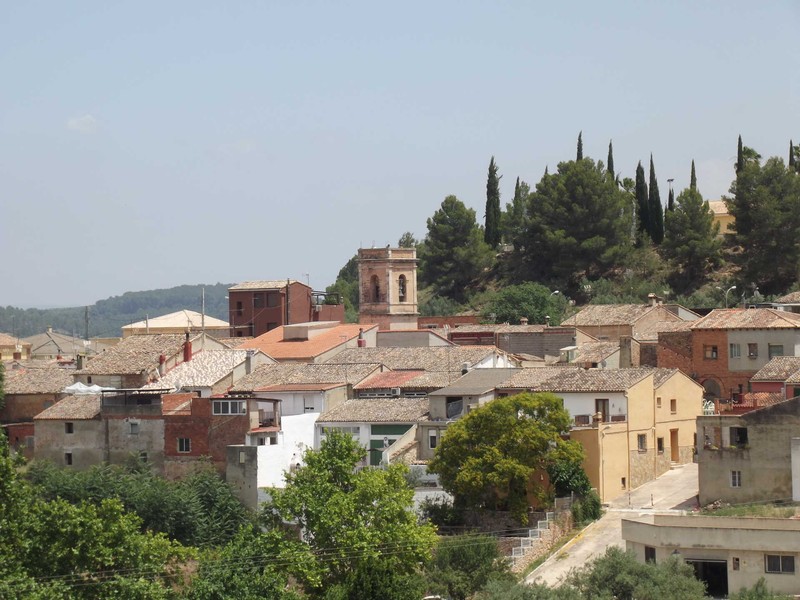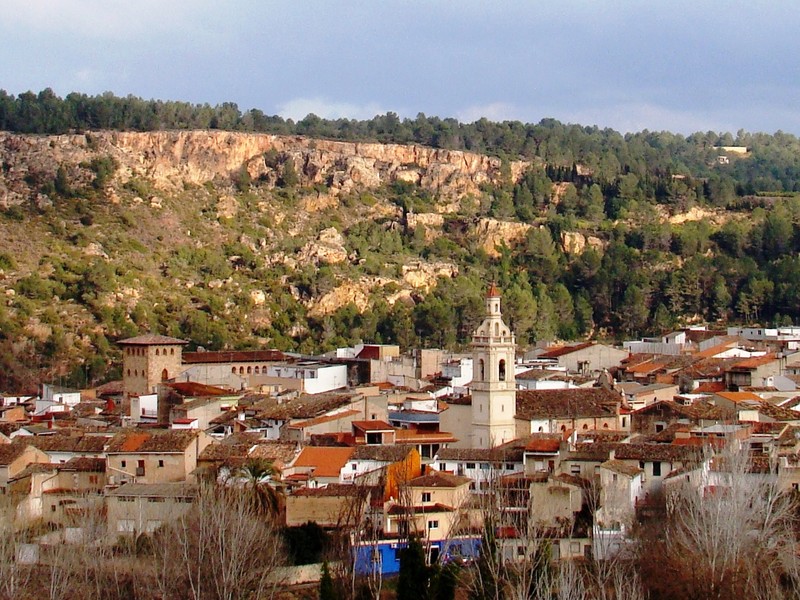Pico Caroche (Bicorp)
The Caroche or Caroig peak is a mountain of 1,126 meters, located in Teresa de Cofrentes, Spain. It is situated
The Moorish colonisation of La Canal de Navarrés during the 8th to 10th centuries by Berber clans led to the creation of farmsteads devoted to cultivating newly-created vegetable plots and the use of pasture lands and the mountains. When, from the mid-12th century onwards, Castilian, Aragonese and Catalan knights advanced towards the south, the Valencian Moors began to fortify their farmsteads with castellations and towers, in order to prevent raids and pillaging. One of these castle-shelters, an enclosure for people, crops and livestock, was located in Navarrés, which has been archaeologically dated to the first third of the 13th century. Due to its function it was situated at a low elevation, not on a hilltop, and next to the main farmstead in the area, which came under the control of Jaime I, and thus, of feudal Valencian society, after the fall of Xàtiva in 1244.
When the knight Pasqual Maçana purchased the feudal estate of Navarrés he requested permission from King Peter the Ceremonious to rebuild the castle (1373), given that the war between the Kingdoms of Valencia and Castile meant that the border area suffered from occasional raids and pillaging (Archive of the Crown of Aragón, Royal Chancellery, reg. 1464, f. 126r). He was given permission, however the crown believed that the castle was too remote and that it would be better to build another next to the town and knock down the old one.
In the end, Mossén Maçana chose to knock down the Andalusí ruins to build a new castle made from Moorish rammed earth on the same site, but with regional measurements: a rectangle of 16 x 53.5 Xàtiva yards (14.59 x 48.79 m), with a defensive tower annexed to the south-eastern end, measuring 5.47 x 6.38 m (6 x 7 yards or alnas – an old measurement). After the wars against Castile ended in 1430, Navarrés Castle was conserved as a symbol of feudal power and used as the setting for the investiture ceremonies of the successive lords, barons and marquises of Navarrés, from the 15th to 19th centuries. Only the lower section of the enclosure walls and the tower are preserved, which were partly restored and shored up architecturally between 2018 and 2019.
The Caroche or Caroig peak is a mountain of 1,126 meters, located in Teresa de Cofrentes, Spain. It is situated
You will love La Canal de Navarrés! It’s an ideal destination for the whole family, to discover with friends, and

Estubeny, located in the interior of the province of Valencia, is an inland destination that hides a unique natural space,

Anna is a beautiful municipality in the Canal de Navarrés, well known for its Anna Lake, a lagoon surrounded by
Copyright © 2023. La Canal de Navarrés. All rights reserved.
Do not hesitate to contact us for any further information.
This website uses cookies so that we can provide you with the best user experience possible. Cookie information is stored in your browser and performs functions such as recognising you when you return to our website and helping our team to understand which sections of the website you find most interesting and useful.
Strictly Necessary Cookie should be enabled at all times so that we can save your preferences for cookie settings.
If you disable this cookie, we will not be able to save your preferences. This means that every time you visit this website you will need to enable or disable cookies again.